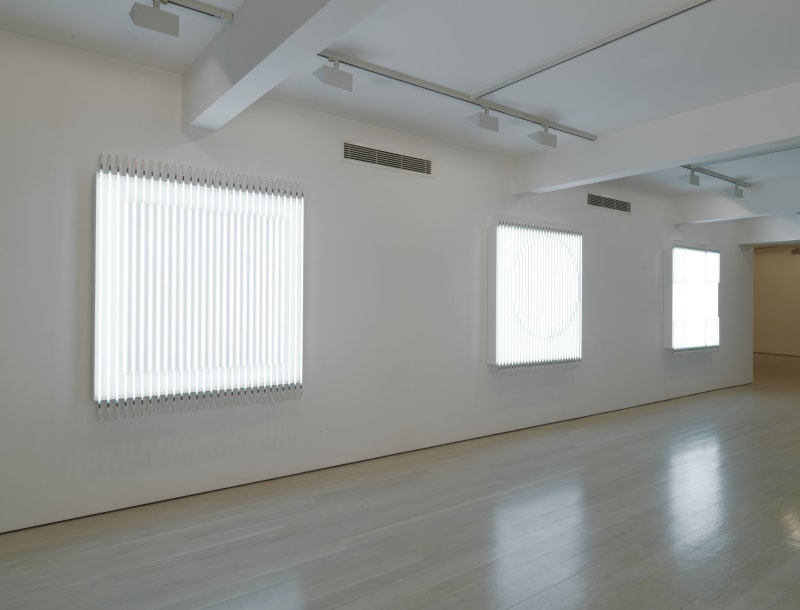Born in Cholet, France in 1926 where he lived and worked all his life, Morellet studied literature in Paris before returning to work in his family-owned toy factory until 1975. His early paintings from the 1940’s were realistic landscapes, portraits and still lifes but he turned to abstraction after a trip to Brazil in 1950 where he discovered Concrete Art and the work of Max Bill. Morellet developed works based on a simple geometric and numeric system, which removed the subjectivity of the artist and dismantled any accepted notions of composition in art. In the late 50’s he discovered the ‘Duo-collages’ of Jean Arp and Sophie Taeuber-Arp, which prompted him to adopt chance as a central principle, creating works based on random numbers or the infinite decimals of PI.
In the early 1960’s Morellet joined GRAV (Groupe de Recherche d'Art Visuel: 1960-1968), an experimental group of artists who explored the possibilities of engagement between kinetic art and the viewer and sought to demystify the notion of the artist as individual. In search of a new medium of expression, from 1963 Morellet centered on neon as his material of choice. What interested Morellet in neon tubing was its specific material properties: its luminosity, the way it could be made to shut on and off automatically and that it was a manufactured, industrial material.
In 1965 Morellet took part in ‘The Responsive Eye’ an important group exhibition at New York’s Museum of Modern Art, and in 1988-5 a retrospective of his work toured North America including the Albright Knox Gallery, Musee d’art Contemporain, Montreal, Brooklyn Museum and Center for Fine Arts in Miami. Morellet has featured in numerous landmark group exhibitions including Documenta in Kassel in 1964, 1978 & 1977 and the Venice Biennale in 1970 & 1990. His first major solo museum exhibition was organized by the Stedelijk Van Abbemuseum in Eindhoven in 1971 and toured throughout Europe - at each venue the works were displayed in different orientations; horizontal, vertical or upside down. Major retrospective shows have included the Centre Pompidou, Paris in 1986 & 2011 and Jeu de Paume in 2000. In 2010 Morellet was only the second artist to exhibit in their lifetime at the Louvre Museum with a site-specific work entitled ‘L’esprit d’escalier’. In 2017, the DIA Art Foundation presented a major survey of Morellet’s work in the United States.
Morellet’s work is widely represented in public collections and museums in France, Germany, across the rest of Europe and worldwide including the Centre Pompidou, Paris, Tate Modern, London, Kunsthaus Zurich, Nationalgalerie, Berlin, Stedelijk Museum, Amsterdam, Los Angeles Museum of Art, MOMA New York, Hirshorn Sculpture Garden, Washington DC, USA
